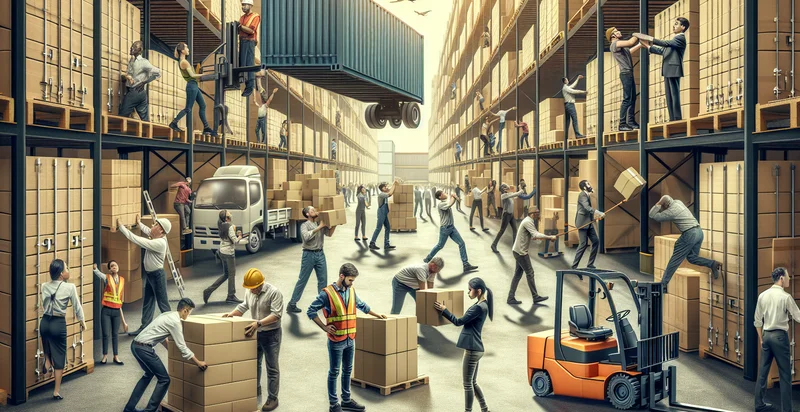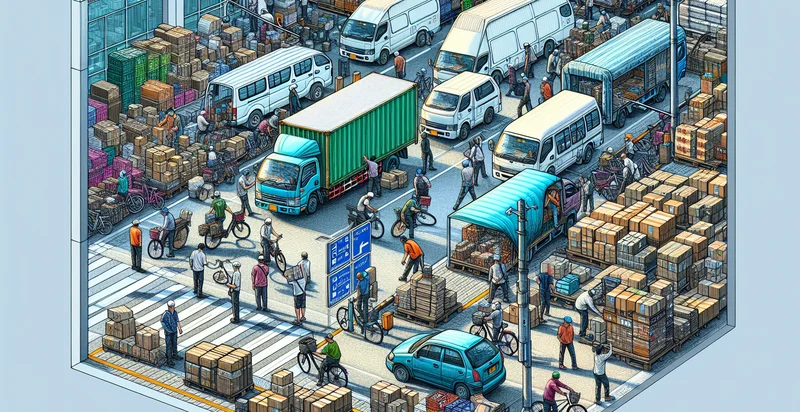Identify unloading hazards
using AI
Below is a free classifier to identify unloading hazards. Just upload your image, and our AI will predict the type of unloading hazard present - in just seconds.

Contact us for API access
Or, use Nyckel to build highly-accurate custom classifiers in just minutes. No PhD required.
Get started
import nyckel
credentials = nyckel.Credentials("YOUR_CLIENT_ID", "YOUR_CLIENT_SECRET")
nyckel.invoke("unloading-hazards", "your_image_url", credentials)
fetch('https://www.nyckel.com/v1/functions/unloading-hazards/invoke', {
method: 'POST',
headers: {
'Authorization': 'Bearer ' + 'YOUR_BEARER_TOKEN',
'Content-Type': 'application/json',
},
body: JSON.stringify(
{"data": "your_image_url"}
)
})
.then(response => response.json())
.then(data => console.log(data));
curl -X POST \
-H "Content-Type: application/json" \
-H "Authorization: Bearer YOUR_BEARER_TOKEN" \
-d '{"data": "your_image_url"}' \
https://www.nyckel.com/v1/functions/unloading-hazards/invoke
How this classifier works
To start, upload your image. Our AI tool will then predict the type of unloading hazard present.
This pretrained image model uses a Nyckel-created dataset and has 17 labels, including Crushing Hazards, Electrical Hazards, Falling From Heights, Falling Objects, Forklift Incidents, Hazardous Materials Exposure, Inadequate Training, Load Shifting, Personal Protective Equipment Failure and Poor Communication.
We'll also show a confidence score (the higher the number, the more confident the AI model is around the type of unloading hazard present).
Whether you're just curious or building unloading hazards detection into your application, we hope our classifier proves helpful.
Related Classifiers
Need to identify unloading hazards at scale?
Get API or Zapier access to this classifier for free. It's perfect for:
- Warehouse Safety Monitoring: This use case leverages the false image classification function to identify unloading hazards in warehouse environments. By analyzing real-time images, the system can pinpoint unsafe behaviors or conditions, helping supervisors to intervene promptly and reduce the risk of accidents.
- Logistics and Shipping Compliance: This function can be integrated into logistics software to ensure that unloading processes comply with safety regulations. By detecting falsely categorized hazards in unloading zones, companies can fine-tune their safety protocols and maintain regulatory compliance, thereby avoiding fines and enhancing reputation.
- Construction Site Safety: On construction sites, the unloading hazards identifier can monitor material unloading activities to prevent dangerous incidents. It helps ensure that heavy materials are handled properly and alerts site managers when hazardous conditions arise, promoting a safer working environment.
- Insurance Risk Assessment: Insurance companies can utilize this function during risk assessments of warehouses and distribution centers. By identifying false classifications of unloading hazards, insurers can evaluate the actual risk levels more accurately and adjust policy terms or premium rates accordingly.
- Training and Simulation Programs: This technology can be used in training programs for employees handling unloading activities. By simulating potential hazard scenarios through false identifiers, trainees can learn to identify and mitigate risks effectively before engaging in real-life operations.
- Facility Management Optimization: Facility managers can use the unloading hazards identifier to assess and improve their unloading procedures. By analyzing the visual data for false hazard classifications, they can optimize layout and workflows, leading to enhanced safety and efficiency in unloading operations.
- IoT Integration for Smart Logistics: Integrating the unloading hazards identifier with IoT sensors and drone technology can create a smart logistics system. This system can provide real-time feedback and notifications about hazardous situations as they occur, significantly improving response times and ensuring worker safety across the supply chain.


